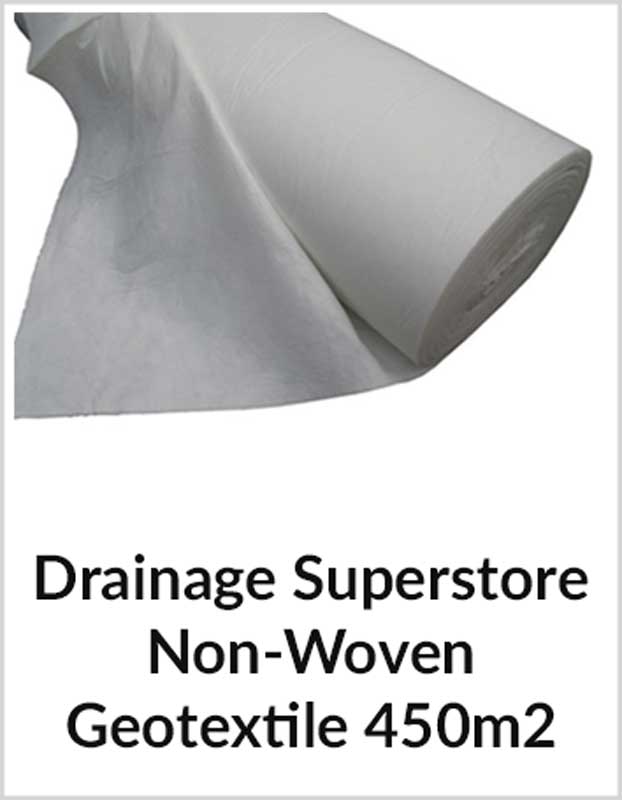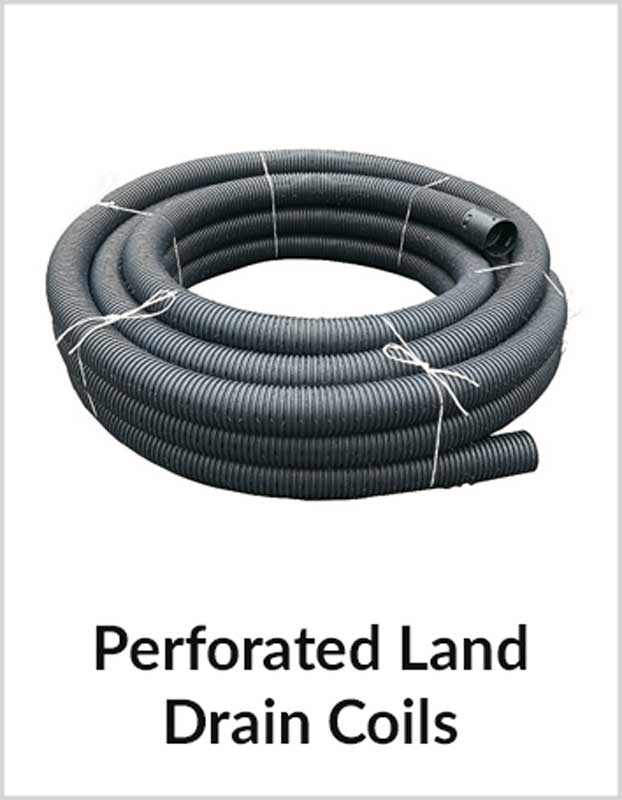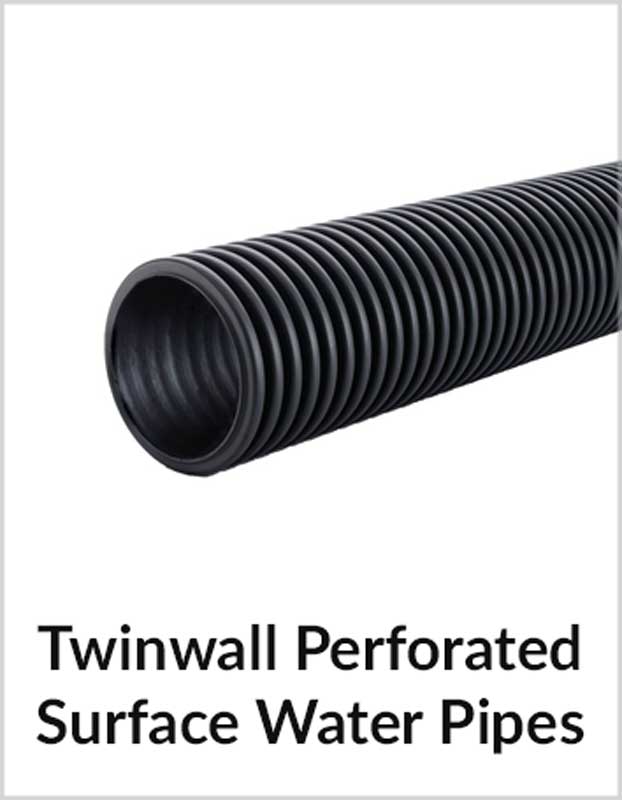Installing a French drain involves digging a trench for discrete and effective drainage of surface water and flood plains. French drains can be very small or very big, depending on the amount of water that needs draining and the size of the area where the flooding or surface water will be. It sounds like a big job, but the list of tools for installing a French drain is short.
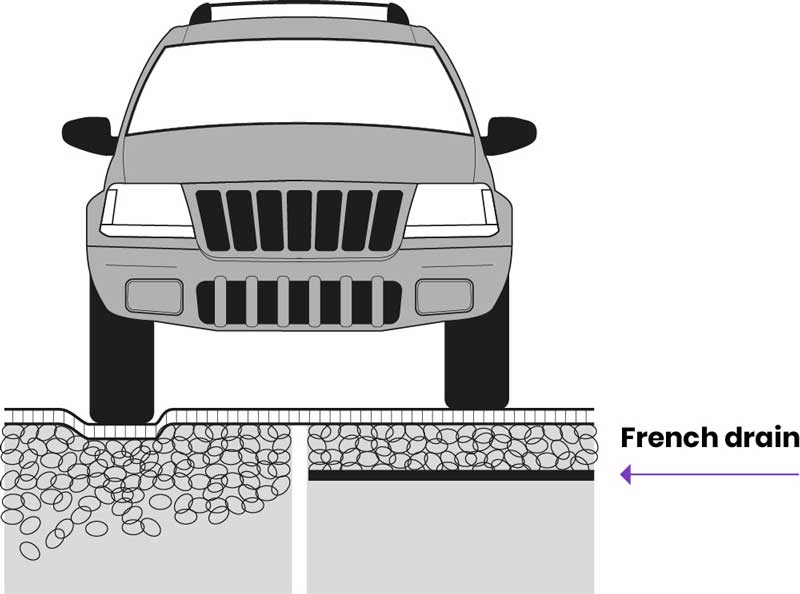
Table of contents
- What you need to install a French drain
- How do you install a French drain?
- Step 1: Dig a trench wider than your pipe at a gradient
- Step 2: Lay a water-permeable landscape fabric in the trench
- Step 3: Fill the bottom of the trench with aggregate
- Step 4: Lay the perforated pipe
- Step 5: Place more aggregate into the trench
- Step 6: Cover the entire French drain with the remaining fabric
- Step 7: Hide the French drain
What you need to install a French drain
There are three main things you will need to install a French drain: a water-permeable non-woven landscape fabric, perforated plastic drainpipes and aggregate.
The perforated drain pipe you choose depends on the size of the area for which you’re installing the system. For agricultural applications and big areas, look at twinwall surface water pipes. These come in large diameters. For domestic and small commercial projects, opt for perforated land drain coils. These have a range of 60 to 200mm diameter sizes.
How do you install a French drain?
French drains are fairly easy to install. This step-by-step guide to installing a French drain contains just six steps!

Step 1: Dig a trench wider than your pipe at a gradient
Choose a location for the trench that’s naturally downhill, or create your own slope by digging the trench at a 1% gradient. This will allow gravity to do its part in draining the water away to your chosen destination. Make the trench wide enough to accommodate the pipe with an aggregate surround and a layer of membrane, too.
Step 2: Lay a water-permeable landscape fabric in the trench
For this, lay the fabric right to the bottom of the trench and up the sides. Keep enough fabric on either side of the trench to lay over the pipe, almost like wrapping a present!
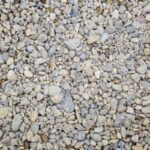 Step 3: Fill the bottom of the trench with aggregate
Step 3: Fill the bottom of the trench with aggregate
Use a standard landscaping aggregate to fill the bottom of the trench to around a third. The large aggregate will keep the water flowing quickly and with potentially fewer blockages, as any pieces of debris that manage to get into the system will flow through gaps in the aggregate. Aggregates that are 1 to 2cm across are generally ideal.
Step 4: Lay the perforated pipe
Lay the chosen drain pipe with the perforated holes face down. If you lay it any other way, the water will be unable to leave the pipe until it is fuller. Use strong and stable pipe connectors and couplers to extend the French drain beyond the capacity of one pipe.
Step 5: Place more aggregate into the trench
Shovel or tip more aggregate, of the same size as before, on top of the pipe in the trench. This should be until the gravel is about 10cm from the top of the trench.
Step 6: Cover the entire French drain with the remaining fabric
The landscape fabric that should be sticking out of the edges of the trench should now be wrapped over the aggregate and pipe. Ensure there’s minimal or no gap between the edges of the fabric. This will prevent debris from entering the drain and clogging up the system.
Step 7: Hide the French drain
You can choose to place a layer of soil or similar over the French drain without concealing the fact that it’s there. This is perhaps useful in agricultural applications, where locating the French drain is important and the look of the land is not. As below, after the landscape fabric has been wrapped around the system, somebody has just installed a layer of decorative aggregate. For domestic and commercial projects, including gardens, parkland and other similar areas, you can cover this area with grass or furniture to disguise the work.
In need of new soil for your installation? Visit our Landscaping Superstore to help you get ready for your latest gardening project!
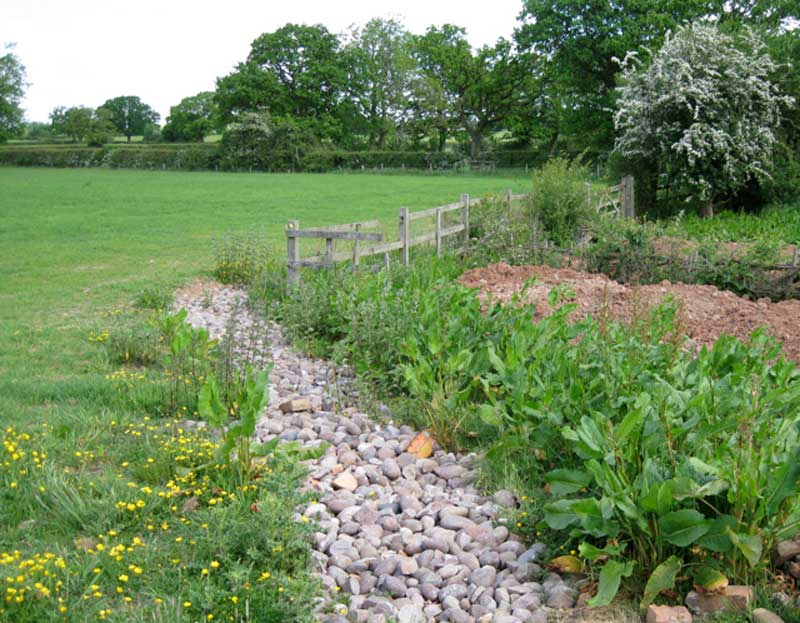
Now you know how to install a French drain, is there more you can do? Well, check out our other help and advice guides to learn about other drainage solutions. We also have a fantastic range of other channel drainage solutions for you to choose from if you’re eager to find something with specific features for your requirements.

